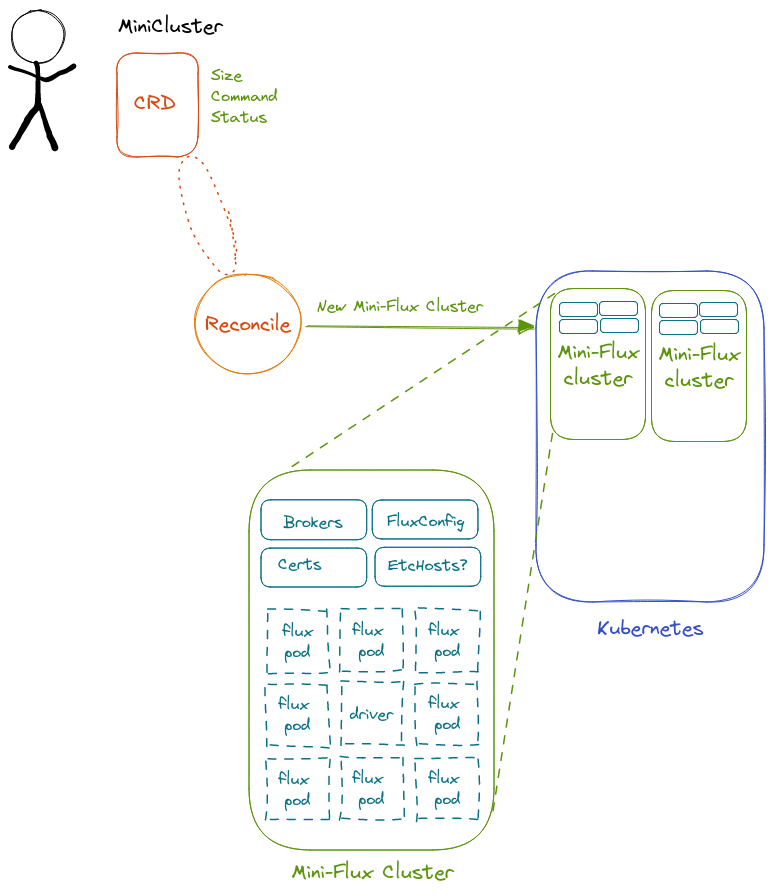Design 3.2¶
This design is a simple design based around a single custom resource definition
Summary¶
A MiniCluster is an indexed job so we can create N copies of the “same” base containers (each with Flux, and the connected workers in our cluster)
The flux config is written to a volume at
/etc/flux/config(created via a config map) as a brokers.toml file.The startup script “wait-X.sh” handles setting up Flux and checking that the container meets all requirements.
If a command is provided, we give it to Flux directly (suggested), otherwise we start a Flux RestFul server to interact with
The container for the flux runner is expected to already have a munge.key in
/etc/munge/munge.key. This will be the same across pods generated given generation from the same container.
To generate the curve certificate (
/etc/curve/curve.cert) we use the flux runner container in a one-off pod to runflux-keygenand retrieve the output in the log. We then write this curve.cert as a Config Map to the indexed job pods. We do this beceause generating it natively in Go would require other libraries on the host for ZeroMQ.Networking of the pods works by way of exposing a service that includes the Pod subdomain. We add fully qualified domain names to the pods so that the
hostnamecommand matches the full name, and Flux is given the full names in its broker.toml.The main pod either runs
flux startwith a web service (creating a persistent “MiniCluster” orflux startwith a specific command (if provided in the CRD) in which case the command runs, and the jobs finish and the cluster goes away.
This means that:
A MiniCluster is a CRD that includes containers, a command (optional for the ephemeral use case), and size
Creating a MiniCluster first creates Config Maps, Volumes, and secrets and then an indexed job with pods that use them
Index 0 is “special” in that is creates the main shared assets, and launches the main command or server (the others start with
flux startand a sleep and essentially register to the cluster.Flux is required in the running container image (from the user), however the Flux RESTful API is not (it is installed when the server comes up).
For the persistent case, jobs can be submit until the cluster is stopped or deleted. For the ephemeral case (providing the command) the job runs and the cluster goes away.
